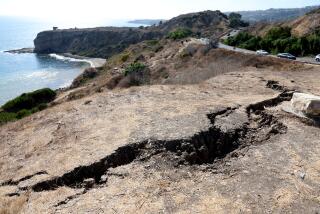Switch smooth in San Diego
SAN DIEGO AND LOS ANGELES — Fears of blank TV screens and pixelated shows largely failed to materialize in San Diego on Wednesday as months of public outreach left the vast majority of viewers capable of receiving pictures via the new all-digital broadcasts.
Although Congress delayed the digital TV transition until June 12 for most of the country, San Diego’s major broadcast stations were among hundreds nationwide that received federal permission to turn off their analog signals early.
Government officials and station managers held their breath, but fewer complaints rolled in than expected.
At KSWB-TV Channel 5, a Fox affiliate, a phone bank sat silent. By midmorning, the station had received only 20 calls from people asking how they could get their old TVs to receive the new digital signals.
“I was expecting a lot more than this,” said Linda Garnica, the station’s receptionist.
Organizers said that months of public service announcements, testing, outreach and advertising had paid off.
“I feel like a politician,” said Barry Zears, a field officer for the Federal Communications Commission who swung by the KSWB office to see how things were going. “Most of our outreach was done beforehand at senior centers, community centers and elsewhere. We’ve gone out to shake all the hands and kiss all the babies. And now we’re waiting for the votes to come in.”
KGTV-TV Channel 10, the local ABC affiliate, said it received about 50 calls from viewers who had trouble tuning in. Jeff Block, the station’s vice president and general manager, had organized an in-house call center staffed with about a dozen people who could handle queries from confused viewers, but he whittled that down to only a few by midday.
“We haven’t needed that many people,” Block said.
During the last week, San Diego’s CBS affiliate, KFMB-TV Channel 8, ran a crawl across the screen for five minutes every hour warning viewers of the switch. It went to 10 minutes an hour during the last two days.
“We only got about 20 or so phone calls and 30 e-mails,” said Ed Trimble, president and CEO of the KFMB Stations. “This was a good testament to what we’ve been doing.”
Nationally, an estimated 5 million households, or about 4.4% of homes, were considered unprepared for the switch, Nielsen Co. said Wednesday. In San Diego, 4.8% of households, or about 30,000 homes, were believed to be unprepared.
An estimated 421 local TV stations, a quarter of the nation’s broadcasters, received permission from the FCC to make the switch early. An additional 220 stations have already switched off their analog signals. The rest are scheduled to go on or before June 12, the new federal deadline.
Viewers who get cable or satellite TV service are unaffected, as are owners of newer TV sets that can handle digital signals. Those with older sets need to either buy a digital converter box, which generally costs $40 to $80, or subscribe to cable or satellite TV.
The transition has not been entirely painless. In San Diego, XETV-TV Channel 6, a CW affiliate that also broadcasts programs to Tijuana, decided Tuesday to delay cutting off its analog signal until after it secured approval from the Mexican government, said Richard Doutre Jones, the station’s general manager.
In Vermont, viewers reported getting bad reception because some stations had physically moved their transmitters, making it more difficult for people with weaker antennas, according to Television Week, a trade publication.
In addition, a federal program that gave out $40 coupons for converter boxes ran out of money in January, and about 4 million requests remain on a waiting list.
Finding a converter box also posed a challenge, with some retailers reporting shortages.
Mary Sievert dropped by a Wal-Mart store about 6 miles east of downtown San Diego on Wednesday to buy a converter box for her 86-year-old mother. The retired teacher from Lakeside walked out empty-handed after she found that the store had run out of the devices the night before.
“We wanted to surprise my mom by giving her a converter box,” Sievert said. “But I guess the surprise is on us.”
Channel 10 has been collecting unused converter box coupons and sending them to folks who need them, Block said.
“We’ve sent out about 80 coupons to people, and there are another 80 or so on the waiting list,” he said. “We’re sending them out as we get them.”
Many of the calls to stations Wednesday were questions about how to obtain coupons. Other callers were confused about why their converter boxes worked Tuesday night but stopped receiving signals Wednesday. They were told the boxes had to re-scan for digital signals once analog signals were turned off.
--
meg.james@latimes.com
More to Read
Sign up for Essential California
The most important California stories and recommendations in your inbox every morning.
You may occasionally receive promotional content from the Los Angeles Times.











